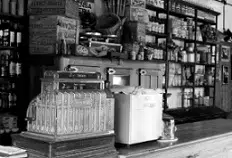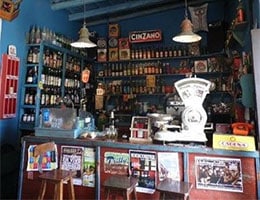 The concept of pulpería is used in several Latin American countries to refer to the trade where food and various frequently used products are offered . According to the dictionary of the Royal Spanish Academy ( RAE ), the term derives from pulp , since in the beginning they marketed fruits and sweets that were made from them. There are, however, other theories about the origin of the name.
The concept of pulpería is used in several Latin American countries to refer to the trade where food and various frequently used products are offered . According to the dictionary of the Royal Spanish Academy ( RAE ), the term derives from pulp , since in the beginning they marketed fruits and sweets that were made from them. There are, however, other theories about the origin of the name.
Pulperias were born in the 16th century and were the most common stores until the beginning of the 20th century . They were found very frequently in several Spanish-speaking countries, both in Central and South America.
People could find in these establishments everything they needed for their daily lives, from food products to remedies, drinks, candles, raw materials for sewing, charcoal and many other items .
Many times grocery stores were also constituted as spaces for social gatherings . People, especially in villages or small cities, gathered in these places to play cards or dice , listen to the singers or simply chat. It was an ideal place to stay up to date with the news since it brought together people from various places.
It is important to keep in mind that grocery stores had different characteristics depending on the region . The thing is that they were the living portrait of the culture of each place, where those customs that most represented them and that united citizens with more strength than any government can have were kept alive.
In some areas they almost no longer exist or are called differently, while in other places the term is still popular. In Argentina , for example, the idea of pulpería refers to the rural warehouses that extended across a large part of the territory of Buenos Aires and other provinces at the beginning of the 19th century .
 Currently, a few grocery stores remain, many times converted into another type of business. New businesses inspired by the grocery stores of yesteryear also opened.
Currently, a few grocery stores remain, many times converted into another type of business. New businesses inspired by the grocery stores of yesteryear also opened.
Due to the size of the Argentine surface, the grocery stores were a meeting point for the gauchos . The artist Florencio Molina Campos (1891-1959) portrayed the atmosphere of these sites in several of his paintings.
One of the first issues that draws attention to the term is that it does not seem to reflect at first glance the idea of a canteen or commercial store. In fact, there are at least three theories regarding its origin. The first postulates that it is related to the terms octopus or pulp . For certain experts, the meaning of pulpería refers to the fact that in some of them octopus was sold, both raw and in the form of the recipe called pulpo a la gallega , while for others it is related to fruit pulp , something that could also be consume there.
As a side note before continuing with the theories, the chronicler Garcilaso de la Vega said that the sellers with few resources were known as pulperos . Another possible origin of the name is found in the drink called pulque , which is prepared in Mexico using the leaves of the maguey plant and is generally sold in pulquerías . This was proposed by Solórzano Pereira in the mid-17th century in his book Indiana Politics . In other words, the term pulpería would have mutated, losing the pair -qu- in favor of the letter p .
Finally, there are those who associate the idea of the many tentacles of the octopus with the constant activity of the shop assistants, who had to act very agilely to satisfy all their customers, as if they had many arms . This theory is the least respected of the three.
